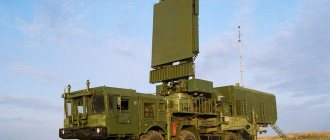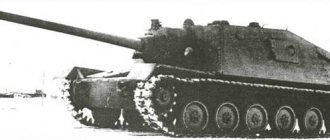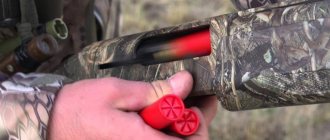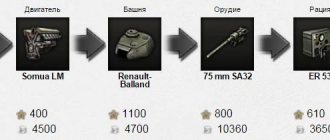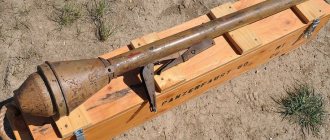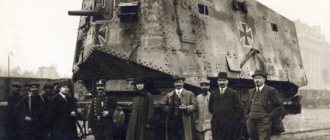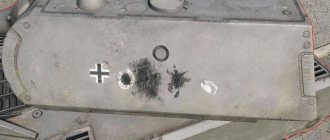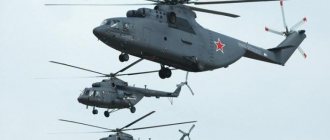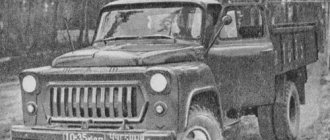4.3
Average rating: 4.3
Total ratings received: 5.
4.3
Average rating: 4.3
Total ratings received: 5.
The second half of the 5th century AD became for Western Europe the period of the final collapse of the Western Roman Empire. Barbarian states appeared on its territory. One of the most influential was the kingdom of the Franks, which was created by King Clovis in 481 on the territory of mainly modern Belgium. In 486, he defeated the Gallo-Roman commander Syagrius in the battle of Soissons.
Background
Roman Gaul was one of the provinces of the Western Roman Empire in the territory of modern France.
Rice. 1. Battle of Soissons.
By 476, the kingdoms of the Burgundians, Visigoths and Franks appeared on its territory, as well as a large region in the north - the Soissons region, which was controlled by the Roman governor Syagrius.
The capital of this state has been the city of Soissons since 462. In the north, the territory reached the shores of the English Channel, and in the west, the mouth of the Loire. In the east, the state extended to the Marne River. It was surrounded along the perimeter by barbarians:
- Tribes of the Britons penetrated the Brittany peninsula after being driven out of Great Britain by the Anglo-Saxons.
- Lands of the Franks and Alamanni in the northeast and east.
- Kingdoms of the Visigoths and Burgundians from the south and southeast.
In 461, Libius Severus was not recognized as emperor in Soissons. In 469, the commander Syagrius began to rule the state. He had a temporary alliance with the Franks against the Visigoth king Euric until 484. In the spring of 486, the Franks launched an offensive from the former Roman province of Belgica towards Paris.
The source of information about the Battle of Soissons is the “History of the Franks” by Gregory of Tours. This man was a bishop in the kingdom of the Franks from 573 to 593. The semi-legendary historian Fredegar also wrote about it in the middle of the 7th century and the anonymous chronicler of the Book of the History of the Franks of the 8th century.
Rice. 2. Clovis I.
Reason for war
The Franco-Prussian War began in July 1870. The reason for the start of this war was serious disputes for power in Spain. Someone had to take the royal throne.
The Spanish government, under pressure from Prussia, offered this post to Prince Leopold of Hohenzollern-Sigmaringen, who was not the last relative of King William I of Prussia.
The Emperor of France, Napoleon III, was simply beside himself with rage when he learned of this news. He was ready to kill anyone who got in his way.
The French emperor could be understood. He was well aware that every day Prussia was becoming stronger. The war with Austria, which was started by the Prussians, seriously shook the balance of power that had developed in Europe. Now the political and economic stability of France was under attack.
Using his connections, Napoleon III forced Prince Leopold to renounce the royal throne in Spain. He then demanded from the King of Prussia that he officially confirm this refusal.
At first, Wilhelm was ready to make concessions, but Minister Bismarck intervened. He was able to distort the text of the telegram sent by Wilhelm to France so much that it became offensive.
Already on July 13, the text of this telegram was in all newspapers. The next day, July 14, France declared war on Prussia.
Napoleon III was so offended by the text of the telegram that he simply had no other choice - he decided to personally lead his army.
Progress of the battle and consequences
The participants in the battle were several thousand warriors on each side, as well as King Clovis and the leader of the Merovingian family Ragnahar. Their army reached Soissons without encountering resistance. Syagrius chose the site of the battle and, after the defeat of his army, fled south to Toulouse to the Visigoth king Alaric II. Clovis began to threaten the latter with war and was able to obtain the extradition of Syagrius for his execution.
The Franks captured rich spoils from the battle and divided them between their wars. Among the valuable trophies was the Soissons Cup. The complete defeat of the Gallo-Romans, however, was not the result of the battle. Over the next few years, Clovis besieged the fortresses of Verdun and Nantes. For several years the power of the pagan king of the Franks was not recognized in Paris. In 496, Clovis was baptized, and this event became a symbolic reconciliation of the former Halo-Romans and the Franks.
Another result of the battle was the disappearance of the last Gallo-Roman state, the Soissons region, from the map of Europe. Her lands became part of the kingdom of the Franks, and its territory doubled, reaching the shores of the Bay of Biscay in the west. The Loire River became the southern border of Clovis's kingdom for a time, but soon, at the beginning of the 6th century, he conducted a successful military campaign against the Visigoths and by 511 pushed the southern border of his state to the cities of Bordeaux and Toulouse.
Clovis ruled the kingdom of the Franks until 511, and his activities are associated with the creation of a code of laws - the “Salic Truth”, as well as the transfer of the state capital from the city of Tournai to Paris in 508.
Rice. 3. Kingdom of the Franks under Clovis.
Battle of Soissons
Battle of Soissons
The French tankers achieved their greatest success on July 18, 1918 near Soissons, when the 10th and 6th French armies launched a counteroffensive against the positions where the German offensive had stopped between the Ain and Marne rivers.
The goal was to eliminate the Marne salient of the front of the 7th German Army (the so-called “second battle of the Marne”). The French commander J. Foch took into account the previous mistake of the English General Haig, who left the shock troops without reserves (although a number of historians attribute this foresight to Pétain). The main blow on the 15 km front between the rivers Ain and Ourcq was delivered by the 10th Army of Mangin, abundantly supplied with tanks (343 vehicles - 3 groups of Schneiders, 3 groups of Saint-Chamons, 3 Renault battalions) and artillery. In the first echelon, 10 divisions attacked, including the 1st and 2nd American divisions, in the second - 6 divisions, and the 15th and 34th British divisions were in reserve. Degutte's 6th Army (a total of 7 divisions, including the 4th and 26th American divisions in the first echelon and one in the second) advanced between the Ourcq and Marne rivers. The special mention of American divisions is not accidental - at that time they were divisions of “double strength” compared to a regular British or French infantry division. To support the American divisions, they were given French tanks with French crews. In particular, the 11th and 12th groups (divisions) of the "Saint-Chamons" were assigned to the 1st American division. To develop success, the 10th French Army received a cavalry corps, which was subordinated to 6 motorized infantry battalions on trucks along with sappers
The preparation and concentration of tanks (by water transport and along dirt roads) was carried out quite secretly; in particular, five Renault battalions were transferred from the front of the 1st and 3rd armies on July 14–17 (from the area of Amiens and St. Esprit, Denis) . On the night of July 17, the tanks took a wait-and-see position, and the Renaults walked to them from the unloading site on their own along 12-14 km - a lot at that time. The attack was carried out suddenly, without preliminary artillery preparation, at dawn, under the cover of fog. A tank platoon or battery of tanks was usually attached to an attacking infantry battalion. Tanks had to operate in close connection with the infantry, overtaking them wherever possible; To cover them, the artillery opened counter-battery fire as soon as it began moving, and then transferred it at a signal from the planes - the fighters were supposed to cover the tanks from attacks by German planes. The density of tanks in the main attack areas was 14 tanks per 1 km of front in the 10th Army, and 11 in the 6th Army.
Distribution of French tanks on July 18, 1918
| Army | Connection, part | Tank unit, unit, brand of tanks | Number of tanks |
| 10th | 1st Corps | 3rd Group "Schneider" | 27 |
| 10th | 20th Corps | 11th and 12th groups "Saint-Chamond" 1st and 4th group "Schneider" | 156 |
| 10th | 30th Corps (38th, 48th Infantry Divisions) | 10th Group "Saint-Chamond" | 24 |
| 10th | Army Reserve | 1st, 2nd, 3rd Renault battalions | 130 |
| 6th | 2nd Division | two companies of the 7th Renault battalion | 30 |
| 6th | 47th Division | 8th Renault Battalion | 45 |
| 42nd Group "Saint-Chamond" | 24 | ||
| 6th | 164th Division | company of the 9th battalion "Renault" | 15 |
| 6th | 63rd Division | two companies of the 9th Renault battalion | 30 |
| 6th | Army Reserve | 41st Group "Saint-Chamond" | 24 |
| company "Renault" | 15 |
In total, 245 Renaults, 100 Saint-Chamons, and 123 Schneiders went into battle. Renault tanks played a decisive role in this battle. The French largely repeated the British tactics at Cambrai, more clearly using the massing of tanks in the direction of the breakthrough. Let us note the specific use of tanks of the 11th and 12th groups, which provided fire support for the 1st American division, and the 10th group, which operated with the 38th and 48th French infantry divisions. After the infantry captured the first line of German trenches, the approaching tanks opened fire on the second and third, often inaccessible to field artillery fire. The actions of the Schneiders and Saint-Chamons gave the beginnings of the tactics of self-propelled artillery escort.
The attack began at 4.45 am in light fog after only 10 minutes of artillery preparation. The 6th Army went on the offensive 1.5 hours later and after preliminary artillery preparation. The first lines of German defense were quickly broken through, and at 7.15 the tank reserve was thrown into battle. By 8 o'clock in the morning the advance was 4–5 km. At about 10.00, when the morning fog cleared, the French pilots established that the German front had been broken through for 15 km in the direction of Soissons. The 1st and 2nd Renault battalions from the reserve were assigned to the 20th Corps, the 3rd to the 30th Corps of the 10th Army. By noon, the troops reached the enemy artillery positions. By the end of the day, the 10th Army advanced 9 km, the 6th Army 5 km. The enemy lost 12,000 prisoners and 250 guns. It was the “mass of tanks” that German officers explained this success of the French. The only area where the Germans did not withdraw from their positions was the offensive front of the 11th French division, which had no tanks.
German writer Karl Rosner described a massive attack by Renault light tanks on July 18: “Ahead of the attackers was a vanguard of many hundreds of tanks and, apparently, tanks of the new system, small and very mobile. Having advanced, they formed cover for the machine guns, and in a minimum time a picture was created that our front line was broken through at countless points, and our people were simply fighting for their own skin, while their rear was already under enemy machine-gun fire. Nobody knew exactly what was going on."
Renault FT tanks with a riveted omnibus-type turret, covered in camouflage paint.
The appearance of a mass of tanks with an average density of 10 vehicles per 1 km of front and massive artillery fire (50 guns per 1 km) played their role, but the cover of the tanks turned out to be insufficiently effective. The depth of the first task, which the tanks and infantry carried out brilliantly, was limited by the range to which the artillery could advance the barrage without changing positions. A stop to bring up artillery delayed the French in the second position, and the delay of three cavalry divisions and three infantry battalions in vehicles to the breakthrough site until 15.00 did not allow them to enter the breakthrough and expand it, and the German retreating and reserve units organized a new line of defense, albeit weak . German machine guns once again forced the cavalry to dismount, and the squadrons went into battle on foot. The tanks again acted in one wave, scattered along the entire front; reconnaissance did not reveal any anti-tank weapons that had managed to take up new positions. Of the 225 tanks that went into battle on the front of the 10th Army, 40 failed due to technical reasons, 62 were lost from enemy fire (total losses - 45%). On the front of the 6th Army, the 42nd group of Saint-Chamons almost did not participate in the battle, since they could not catch up (!) with the infantry, but the Renault tanks operated very successfully. Local tank operations continued into the evening. Thus, the 310th Renault Company supported the attack of the 7th Infantry Regiment on two heights south of Ein, launched at 18.30. Tank companies assigned to the advancing battalions unloaded from trucks at the very starting positions and moved around the heights, suppressing machine guns on the reverse slopes with fire and ensuring the completion of the task.
The actions of light tanks allowed the troops to advance as fast as the infantry could move. But this also showed that if there is a reserve of tanks, a constant influx of fresh infantry units is also necessary in order to take advantage of the emerging advantage and, on the one hand, quickly consolidate the captured positions, and on the other, continue the offensive with tanks.
On July 19, prefabricated tank units operated. The 10th Army was able to advance only 2 km, the 6th 2.5–3 km. In the zone of the 10th Army, 50 tanks were lost out of 105 brought into battle (50%), on July 20 - 17 tanks out of 32 (53%), on the 21st - 36 out of 100 (36%) - the usual loss of tanks for those days during the operation, the loss of personnel in tank units on different days ranged from 22 to 27%. On July 23, the remaining units of 19 Schneiders, 24 Saint-Chamond consolidated batteries, 62 Renaults of six consolidated tank companies re-enter the battle. But things are going very hard. The Renaults reach the railway and, when trying to climb the ridge, are shot at by a German battery from a distance of 40 m - 48 tanks are knocked out. The assigned tasks were not completed, the advance of the 10th Army was 0.5–1 km on a front of 5.5 km, the advance of the 6th Army was 2.5 km. The experience of the French is, in principle, the same as that of the British at Cambrai - a quick breakthrough of the first lines with a sudden attack by a mass of tanks, but there is no use and development of the initial success. Again the problem of stopping the offensive even before the end of the possible work of the tanks arises due to the need to bring up artillery.
In total, from July 18 to July 23, 102–103 tanks were lost in the 10th Army zone. In the 6th Army zone, tanks operated for 3 days longer, the losses of tank units amounted to 58 tanks.
The experience of the French is basically the same as that of the British at Cambrai - a quick breakthrough of the first lines with a sudden attack by a mass of tanks, but there is no use and development of the initial success. Again the problem of stopping the offensive even before the end of the possible work of the tanks arises due to the need to bring up artillery.
Note that the relatively large tank fleet allowed the French not to risk all their available forces in one operation, allocating tank units to other sectors. Three Renault battalions and two groups of medium tanks were subordinated to the 9th Army (south of the Marne) to carry out local attacks to improve the position.
The extensive production of the Renault FT-17 allowed the French to quickly replace tank units that had lost their combat effectiveness, and the French tank forces did not experience the same “melting” as in the British Tank Corps. French tankers also had the opportunity to support the British infantry - for example, on July 23, two companies of the 6th Renault battalion operated with the 15th British division between Epey and Marfo. At the same time, tanks in a number of areas manage to advance to a depth of 1.2 km through the forest, in some places crossing through fallen trees - provided that the infantry constantly moves with them and provides assistance.
On July 26, four platoons of the 317th and 318th Renault companies (20 tanks) support an attack by the fresh 9th Infantry Division west of Fleury. Enemy counterattacks force the infantry to retreat, with tanks covering their retreat.
The actions of the French Renaults near Amiens have already been mentioned above. Note that during the offensive operation near Amiens the French had enough tanks to allocate them to other sectors of the front. Thus, on August 10, the 10th Renault battalion (45 tanks) supports the attack on Ressen-sur-Matz in the center of the offensive of the 3rd French Army. The tanks destroy enemy machine guns, capture the Ressen station and hand it and the village over to the infantry, then retreat to their original positions to recover.
Nobody wanted to give in
Stubborn and bloody battles continued for quite a long time, and their outcome would have been unknown if not for the 5th and 6th Corps of the Third Army. They were able to find their bearings and go on the offensive so quickly that the French had to retreat.
General Felix-Charles Douay could hardly be blamed for anything. He demonstrated to the enemy all the strength and power of his artillery, but to his great misfortune, the forces were clearly unequal. The German artillery opened such powerful fire on the enemy that France did not have the slightest chance of success.
Then the French general went for broke - he ordered the hussars, cuirassiers and significant forces of cavalry to meet the enemy and repel him, but... 11 French regiments died limply under continuous German fire. The German infantry worked very well, demonstrating all their skill and strength.
By noon on September 1, the French army was surrounded.
On the left flank the position of the French was extremely unenviable. Not only were they all out of ammo, but they were also stretched into a thin line. The French infantry and cavalry had no choice but to launch a desperate attack on the enemy, clinging to the very small chance of breaking through the strong ranks of the Prussian army.
And it seemed that at a certain point in the battle the French managed to escape, but Prussian cuirassiers arrived at the battlefield, forcing the French cavalry to retreat to the north.
The French lost their last chance of retreat at 15:00, when the Prussian Guard united with the Fifth Corps between Illy and Givonne. Now even the Belgian border was closed to the French.
Hearing the shots of five hundred German guns behind them, the French chaotically retreated to Sedan. Heartbreaking screams, a huge number of killed Frenchmen, corpses of horses and people piled up in a heap. This was not a sight for the faint of heart.
But even those French forces that managed to reach the narrow suspension bridge through which it was possible to enter the city continued to push each other with the hope of salvation.
Only 100,000 French soldiers were able to enter the city. And, it would seem, the walls of the city were perfect for repelling the most powerful infantry attacks, but at that moment the Prussian troops managed to bring their artillery so close that they were able to shell the city territory without hindrance.
The French panicked, everyone tried to save their lives. Many French soldiers threw down their guns, hoping to surrender.
